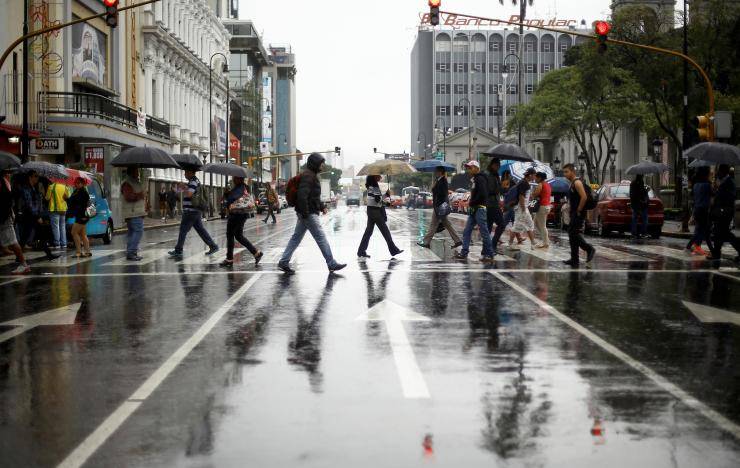Hurricane Otto battered Nicaragua and Costa Rica with powerful winds and torrential rains on Thursday, the same day a major earthquake shook the region, with homes damaged and thousands evacuated, but no deaths reported.
The storm was weakening rapidly on Thursday evening after hitting the southeastern coast of Nicaragua, and was expected to become a tropical storm by early Friday, the US National Hurricane Center said. A hurricane warning was also in effect in neighboring Costa Rica, where fallen trees, blackouts and flooding were reported.
Costa Rica's National Emergency Commission said thousands had been affected by the storm and emergency alerts had been issued throughout the country.
Otto, the seventh Atlantic hurricane of the season, landed north of the town of San Juan de Nicaragua as a Category 2 storm on the five-step Saffir-Simpson scale of intensity, the Miami-based hurricane center said. Thousands of people were evacuated from its path.
It had weakened to a Category 1 storm as of Thursday night, with top sustained winds of 75 mph (121 kph), about 5 miles (8 km) southwest of San Carlos, Nicaragua.
Soon after the storm landed, a 7.0 magnitude quake struck 93 miles (149 km) southwest of Puerto Triunfo, El Salvador, at a depth of 6.4 miles (10.3 km), the US Geological Survey said.
There were no reports of major damage from the quake in El Salvador, but local emergency services ordered the coastal population to withdraw up to 0.6 mile (1 km) from the shore.
Nicaraguan President Daniel Ortega declared a state of emergency because of the storm and the quake, his spokeswoman and wife, Rosario Murillo, said.
Nicaraguan civil protection officials said the hurricane, which was moving west at 12 mph (19 kph), damaged homes and telephone lines but that there had not been reports of any victims.
'WE DON'T WANT TO DIE'
In Bluefields, a city in Nicaragua's southeastern Mosquito Coast, rainfall began early in the morning, and hundreds were moved to storm shelters by Thursday evening.
"We left because we don't want to die. We love our lives," said 53-year-old Carmen Alvarado, who was hunkering down in a school in Bluefields. She was among the 206 people evacuated from the coastal community of El Bluff.
"The fear there is that we were surrounded by water," said Senelia Aragon, 42, standing next to Alvarado, preparing a breakfast of flour tortillas with beans.
Bluefields, once an infamous pirate haunt, was smashed by Hurricane Joan in 1988, a devastating Category 4 storm that destroyed many of the town's 19th century wooden houses.
On the Corn Islands, which face Bluefields and are popular with tourists, 1,400 people were evacuated to shelters, with 1,000 more moved from Punta Gorda, which lies south along the coast from Bluefields, local emergency services said.
Government officials said there had been people along the country's southeast coast who refused to evacuate, but the officials declined to say how many.
Total rainfall of 6 to 12 inches (15 to 30 cm), with isolated amounts of 15 to 20 inches (38 to 50 cm), was expected across northern Costa Rica and southern Nicaragua through Thursday night.






